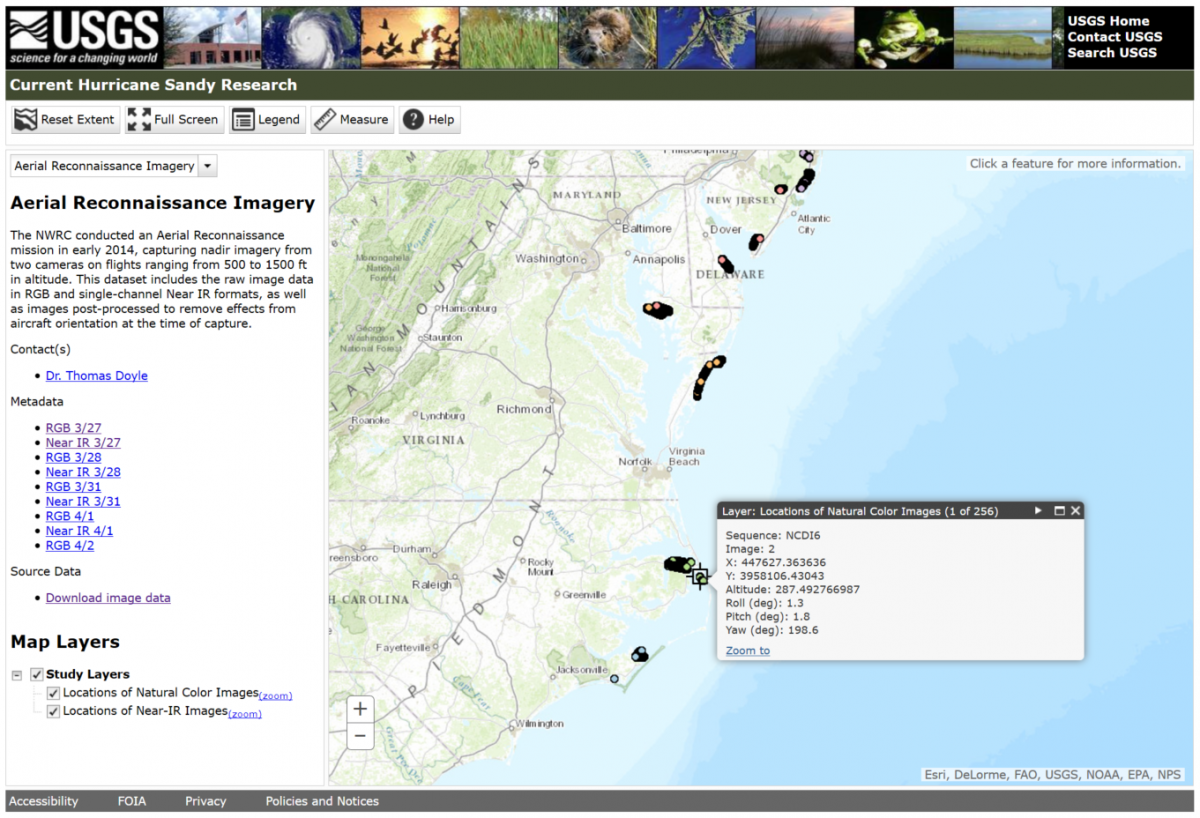The substantial damage that Hurricane Sandy inflicted on coastal communities and surrounding wetlands resulted primarily from an associated storm surge of record extent and impact. In the hardest hit area, Federal lands, national parks, and wildlife refuges are interspersed with a dense urban landscape where the impact to estuaries, wetlands, and coastal forests is more diffuse and difficult to quantify spatially without the aid of aerial photographic and satellite imagery. Access points to these land units and natural resources adjoining roads showed wide-area tree mortality and downed forests of unknown extent and severity. While wind strength and damage from Hurricane Sandy was greatest at landfall in New Jersey, inundation occurred along the entire eastern seaboard from Florida to Maine, eroding shoreline, driving saltwater inland, and uprooting trees.
DOI land managers require information on the extent of forest damage to guide decisions about recovery, research and restoration. The USGS has long used its seaplane asset with camera mount and portal to accomplish post-hurricane reconnaissance missions for the benefit of rapid assessment of damages to natural and cultural resources. A flight plan was implemented to conduct low-altitude videography over select DOI land units along the East Coast from North Carolina to New Jersey that obtained high-resolution imagery to assess forest damage by documenting disturbed canopy and downed trees. The imagery scale of video frames was calibrated to capture whole trees and forest gaps suitable for determining tree fall compass direction and forest cover. Collective video frame analyses were conducted to achieve an understanding of spatial impact at the landscape scale and causal relations of treefall by wind and surge.
A USGS Web portal hosts the raw image files for public access and use by other USGS scientists and agency partners; these georeferenced photos document Hurricane Sandy’s impact and post-storm landscape condition for future studies of forest recovery and succession. The project will produce an understanding of the interaction between soil liquefaction caused by storm surge tides and hurricane wind force and direction that can be applied in spatially-explicit landscape simulation models. These models will help anticipate responses of forested ecosystems under future climate change, which predicts hurricanes of increasing frequency and intensity. Raw files of video imagery are posted on the USGS Hurricane Sandy Web Portal at http://nwrcwebapps.cr.usgs.gov/sandy/.
http://nwrcwebapps.cr.usgs.gov/sandy/

Aerial reconnaissance imagery of natural color and infrared videography of select DOI parks and refuges along the East Coast impacted by Hurricane Sandy.

